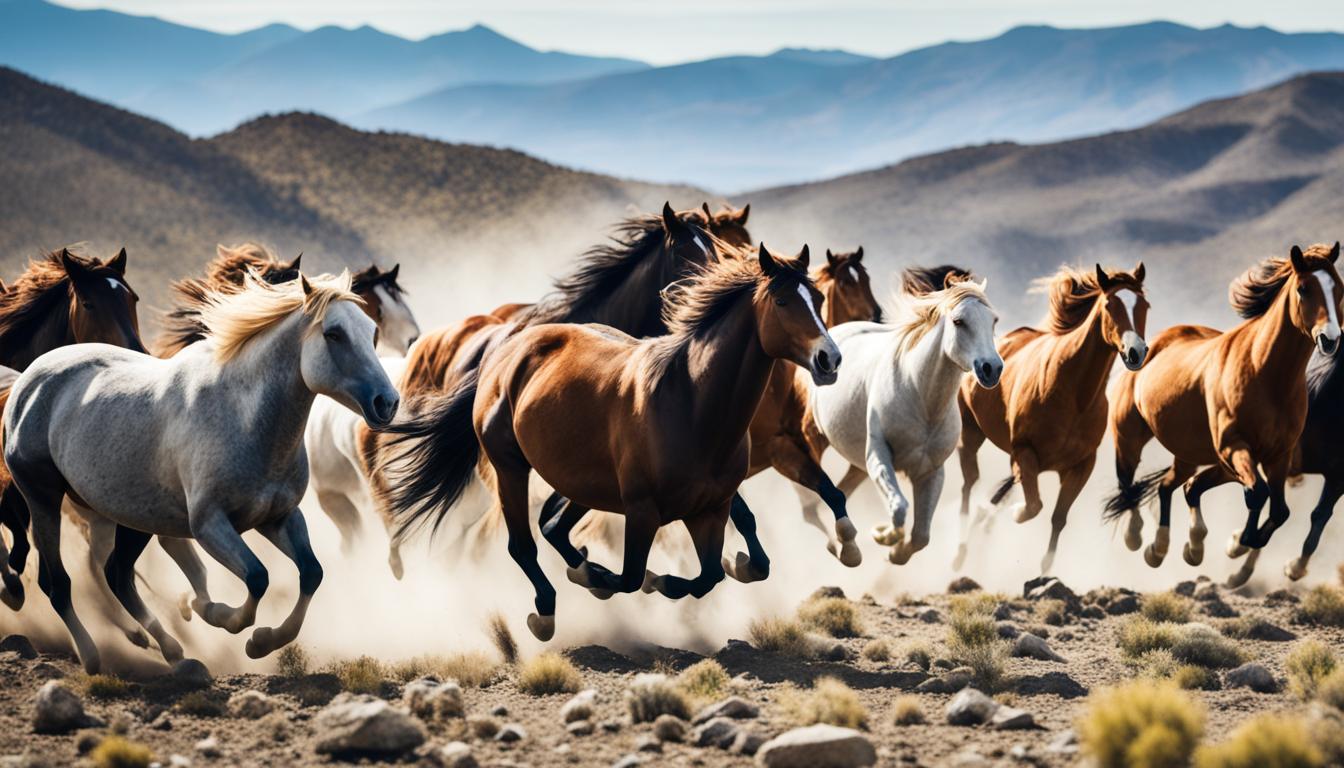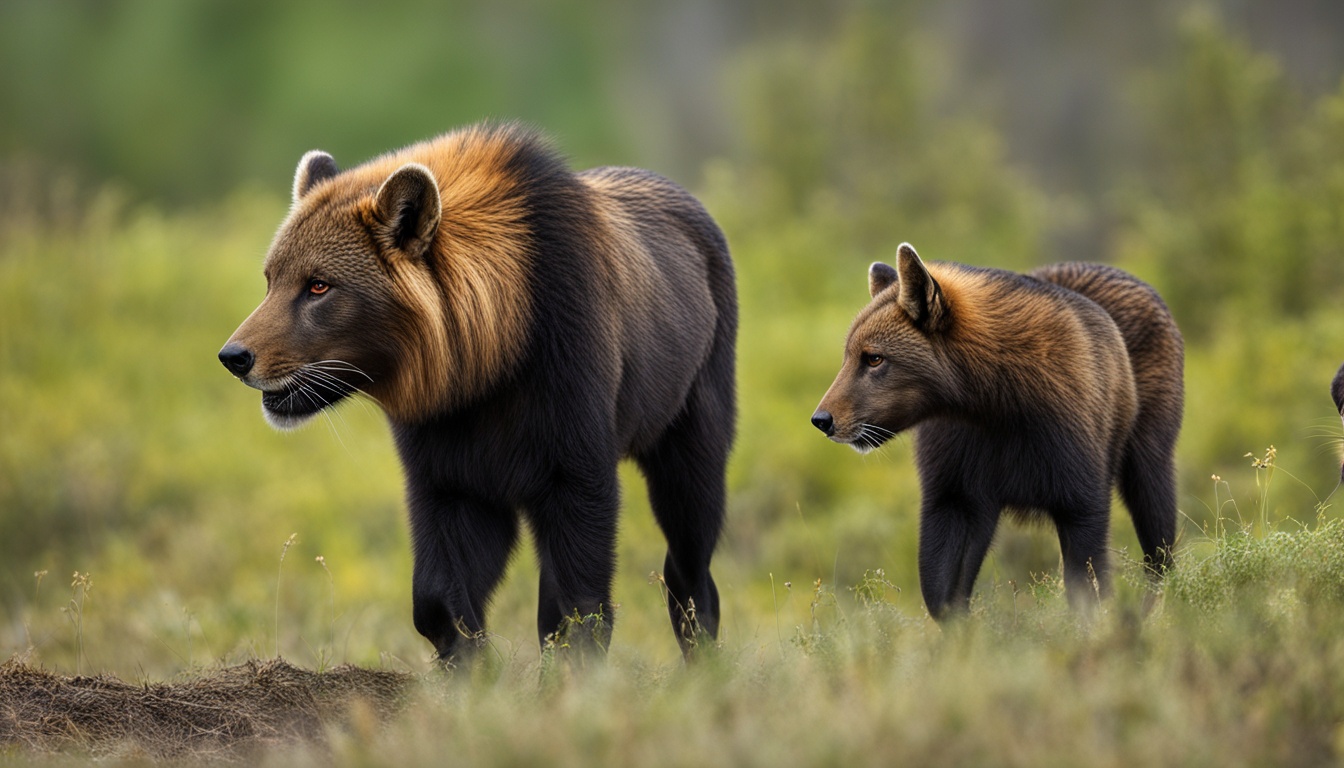Have you ever wondered what bald eagles eat? As one of North America’s most iconic bird species, bald eagles are known for their majestic appearance and impressive hunting abilities. While their diet is often associated with fish, the question remains: do bald eagles only eat fish?
As it turns out, while fish make up a significant portion of their diet, bald eagles are opportunistic predators that feed on a variety of other animals as well. Their feeding habits and prey selection are influenced by various factors, including availability of prey, habitat characteristics, and seasonal variations.
In this article, we’ll explore the diet of bald eagles in-depth and answer the question of whether they solely consume fish. We’ll also discuss the hunting techniques and adaptations of bald eagles, geographic variances in their diet, and the impact of human activities on their prey availability. Let’s dive in!
Key Takeaways:
- Bald eagles are opportunistic predators that feed on a variety of animals, including fish, mammals, birds, and reptiles.
- Their diet is influenced by factors such as availability of prey, habitat characteristics, and seasonal variations.
- The conservation implications of understanding their diet include the importance of maintaining healthy fish populations and protecting their habitats.
- Human activities such as pollution and habitat destruction can also impact their prey availability and overall health of the eagle population.
The Feeding Habits of Bald Eagles
As a predator at the top of the food chain, the bald eagle has developed unique feeding habits to help sustain itself. Eagles are known for their incredible eyesight, which enables them to spot prey from far distances. Once prey is spotted, eagles use their powerful talons to snatch it from the water or ground.
Bald eagles are opportunistic predators, which means they will eat whichever prey is most readily available. While they primarily consume fish, they are also known to eat mammals, birds, and reptiles. This adaptability has helped bald eagles to survive and thrive in a variety of habitats and ecosystems.
The Diet of Bald Eagles
While fish make up a significant portion of the bald eagle’s diet, they are opportunistic predators and feed on a range of other animals as well. Generally, they prey on smaller mammals like rabbits and hares, as well as waterfowl and other birds. Reptiles like snakes and turtles are also a part of their diet, especially in coastal areas where these species are abundant.
In some locations, bald eagles have been observed feeding on carrion, which is the decaying flesh of dead animals. This behavior is more common among juveniles and non-breeding adults, as they may be less successful in capturing live prey.
Fish as the Primary Food Source for Bald Eagles
Many people assume that bald eagles only eat fish. While fish do make up a significant portion of their diet, eagles are opportunistic predators and will also consume a wide variety of other prey items.
That being said, fish are still the primary food source for bald eagles. Studies have shown that fish can make up anywhere from 50% to 90% of the eagle’s diet, depending on the region and time of year.
So, what types of fish do bald eagles typically consume? They prefer fish that are easy to catch and high in fat, such as salmon, herring, and trout. In some areas, they may also feed on small fish like shad and smelt.
Interestingly, bald eagles have also been known to steal fish from other birds, such as ospreys and gulls, as well as raiding the nests of waterfowl and other bird species.
Overall, while fish are not the only prey item that bald eagles consume, they do play a crucial role in the eagle’s diet and are a vital component of their ecosystem.
The Other Prey Items Consumed by Bald Eagles
Bald eagles are known for their ability to hunt and consume fish, but they are also opportunistic predators and will feed on a range of other animals as well. While fish make up a significant portion of their diet, they are also known to eat:
- Small mammals like rabbits and squirrels
- Birds like waterfowl and gulls
- Reptiles like snakes and turtles
These prey items are usually eaten when they are readily available or when other sources of food are scarce. For example, during the winter months, when water sources freeze over and fish become less abundant, bald eagles may turn to small mammals and birds to supplement their diet.
These opportunistic feeding habits have allowed bald eagles to survive in a range of habitats, from coastal regions to inland forests and grasslands. However, their adaptability does not mean they are immune to the threats of habitat loss and environmental pollution, which can impact the availability of all their prey sources.
The Factors Influencing Bald Eagles’ Prey Selection
Bald eagles are opportunistic predators, feeding on a range of prey items from fish to mammals, birds, and reptiles. However, their prey selection may vary depending on several factors.
The Availability of Prey
The availability of prey is a critical factor that influences bald eagles’ dietary preferences. In areas where fish are abundant and easy to catch, such as in coastal regions and near bodies of water, eagles are more likely to rely on fish as their primary food source. In contrast, in areas where fish populations are low, bald eagles may shift their focus to other prey items.
Habitat Characteristics
The habitat characteristics of bald eagles also play a role in their diet. For example, in forested regions, eagles may hunt for small mammals such as rabbits, squirrels, and hares. In grassland regions, they may target small mammals such as rodents and birds. The type of vegetation and the availability of cover may also influence their hunting techniques.
Seasonal Variations
Seasonal variations can also affect bald eagles’ prey selection. During the breeding season, eagles may focus more on fish, as it is a high-energy food source that can support the development of their young. In contrast, during the winter, when fish populations are lower, eagles may switch to other prey items.
Understanding the factors that influence bald eagles’ prey selection is key to protecting their ecosystems and ensuring their survival. Conserving their habitats and maintaining healthy prey populations are crucial steps to safeguarding this iconic bird species for future generations.
The Hunting Techniques and Adaptations of Bald Eagles
When it comes to hunting, bald eagles are skilled predators with a range of adaptations that allow them to capture their prey effectively.
One key adaptation is their sharp talons, which can grip onto slippery fish and other prey items. Their strong beaks also aid in tearing apart their food.
However, perhaps the most notable physical characteristic of bald eagles is their keen eyesight. Their eyes are about four times sharper than those of humans, enabling them to spot prey from great distances.
When hunting for fish, bald eagles will often swoop down and snatch them directly from the water’s surface. They may also dive into the water to capture fish swimming below the surface.
When hunting larger prey, such as mammals or birds, eagles will typically perch or fly over their target, waiting for the right moment to strike. They may also engage in aerial battles with other birds to defend their territory or claim a meal.
In addition to these physical adaptations and hunting techniques, bald eagles also have a degree of strategic intelligence. They may steal food from other birds or animals, or scavenge for carrion when other prey is scarce.
Geographic Variances in Bald Eagle Diet
Bald eagles are found across various geographic regions and habitats, and as such, their diet can vary depending on local prey availability and habitat characteristics. In general, the fish remains a prominent food item for bald eagles, but the types of fish they consume can vary across different regions.
| Region | Primary Fish Consumed |
|---|---|
| Coastal Areas | Salmon, herring, and other coastal fish species |
| Interior Lakes and Rivers | Trout, whitefish, and other freshwater fish species |
| Coastal Marshlands | Crabs, clams, and other shellfish |
Moreover, bald eagles living in urban areas have been observed scavenging for food from human-made sources such as garbage dumps or roadkill. This behavior is not typical but is an adaptation to the changing environment.
Overall, understanding the geographic variances in bald eagle diet is crucial for conservation efforts. By protecting and restoring the habitats of their primary prey species, we can help ensure the survival of these magnificent birds for future generations.
Conservation Implications
Understanding the diet of bald eagles is essential for their conservation. As opportunistic predators, bald eagles have a diverse diet that includes fish, mammals, birds, and reptiles. While fish is a primary food source, it is crucial to maintain healthy fish populations to ensure the survival of this iconic bird species.
The conservation of bald eagles also involves protecting their habitats, which can be affected by human activities such as habitat destruction, pollution, and interference. These activities can impact the availability of prey, which can affect the overall health of the eagle population. It is vital to take measures to minimize human impact and ensure the survival of these majestic birds for future generations to appreciate and admire.
Human Interactions and Impact on Bald Eagles’ Diet
As a majestic and iconic bird species, bald eagles have become a symbol of American freedom and resilience. However, their diet and survival are increasingly threatened by human interactions and activities.
One of the main challenges faced by eagles is pollution. Chemicals such as pesticides, herbicides, and industrial contaminants can accumulate in the fish and other prey items consumed by bald eagles, causing health problems and reducing the availability of healthy prey. Habitat destruction and fragmentation also impact the populations of prey species, making it more difficult for eagles to find food.
Human interference can also have negative implications for bald eagles. Disturbances from human activities, such as recreational boating or hiking, can cause eagles to leave their nests, leading to abandonment and reduced reproductive success. In some cases, eagles may be intentionally or accidentally killed by humans, further reducing their population and impacting the ecosystem as a whole.
It is crucial to recognize the impact of human activities on the diet of bald eagles and take steps to mitigate those impacts. Protecting natural habitats and reducing pollution levels are critical steps in safeguarding the food sources of bald eagles. Additionally, educating the public on responsible interactions with wildlife can help minimize disturbances and promote coexistence.
Overall, it is important to recognize the role that humans play in shaping the diet and survival of bald eagles.
Research and Future Studies
As the bald eagle population continues to recover and expand, ongoing research into their dietary preferences and adaptations is crucial for their continued success. Researchers are currently using a variety of techniques to monitor the diets of eagles, including analyzing regurgitated pellets and studying nest remains.
Future studies may also involve examining the genetic and physiological factors that influence the eagles’ food preferences and hunting techniques. Scientists are interested in understanding how eagles are adapting to a changing environment, and how they may continue to evolve in response to threats such as climate change and habitat loss.
By gaining a deeper understanding of the diet of bald eagles, we can better protect and conserve this iconic bird species for future generations to enjoy.
Conclusion
In conclusion, while it is true that fish make up a significant part of the bald eagle’s diet, they are also opportunistic predators and will consume a variety of other prey items as well. Understanding the feeding habits and adaptations of bald eagles is crucial for their conservation, as factors such as pollution and habitat destruction can have a significant impact on their food sources and overall health.
It is important to maintain diverse and healthy ecosystems to ensure the survival of the bald eagle population, and ongoing research and future studies can provide valuable insights into their dietary preferences and adaptations in a changing environment. By taking measures to protect their habitats and the availability of prey, we can help ensure that these majestic birds continue to thrive.
What Other Types of Birds Do Bald Eagles Eat?
When it comes to bald eagle diets explored, these majestic birds have a diverse palate. Apart from fish, their primary food source, bald eagles also feed on waterfowl, small mammals, and carrion. Additionally, they have been known to snatch prey from other bird species like gulls and ospreys, showcasing their capabilities as opportunistic hunters.
FAQ
Q: Do bald eagles only eat fish?
A: No, while fish make up a significant portion of their diet, bald eagles are opportunistic predators and feed on a range of other animals as well.
Q: What is the main food for bald eagles?
A: Fish are the primary food source for bald eagles, but they also consume mammals, birds, and reptiles.
Q: What factors influence bald eagles’ prey selection?
A: Factors such as the availability of prey, habitat characteristics, and seasonal variations influence the prey selection of bald eagles.
Q: How do bald eagles hunt?
A: Bald eagles use their physical characteristics, such as sharp talons and keen eyesight, to efficiently capture and consume their prey.
Q: Does the diet of bald eagles vary across different geographic regions?
A: Yes, the diet of bald eagles can vary depending on the local ecosystems and the availability of prey species in different geographic regions.
Q: What are the conservation implications of understanding the diet of bald eagles?
A: Understanding the diet of bald eagles is crucial for conserving their habitats and maintaining healthy fish populations, ensuring the survival of this iconic bird species.
Q: How do human activities impact the diet of bald eagles?
A: Human activities such as pollution, habitat destruction, and interference can have negative impacts on the availability of prey for bald eagles and the overall health of their population.
Q: What ongoing research and future studies are focused on the diet of bald eagles?
A: Ongoing research and future studies aim to further understand the dietary preferences and adaptations of bald eagles in a changing environment.











